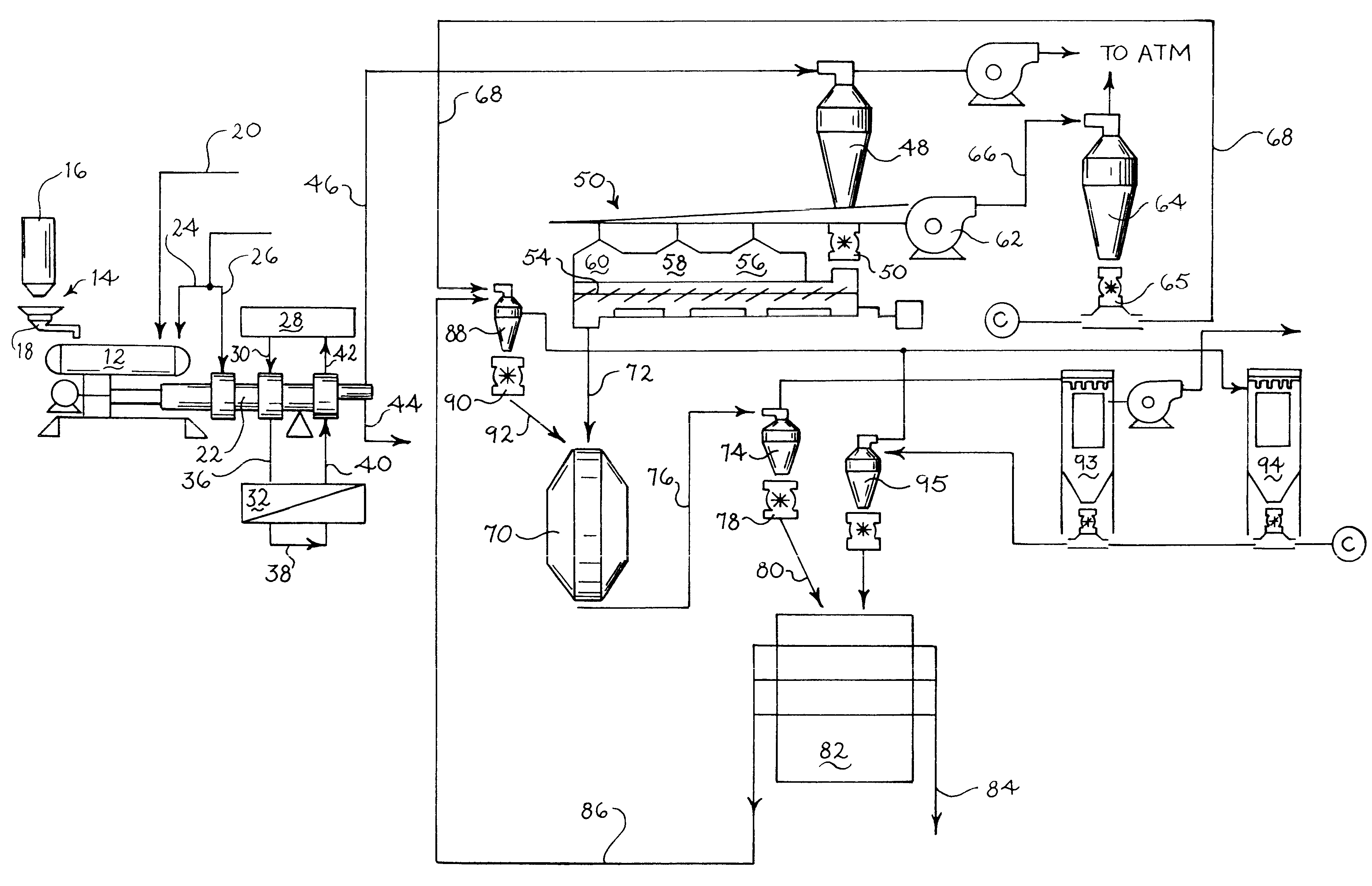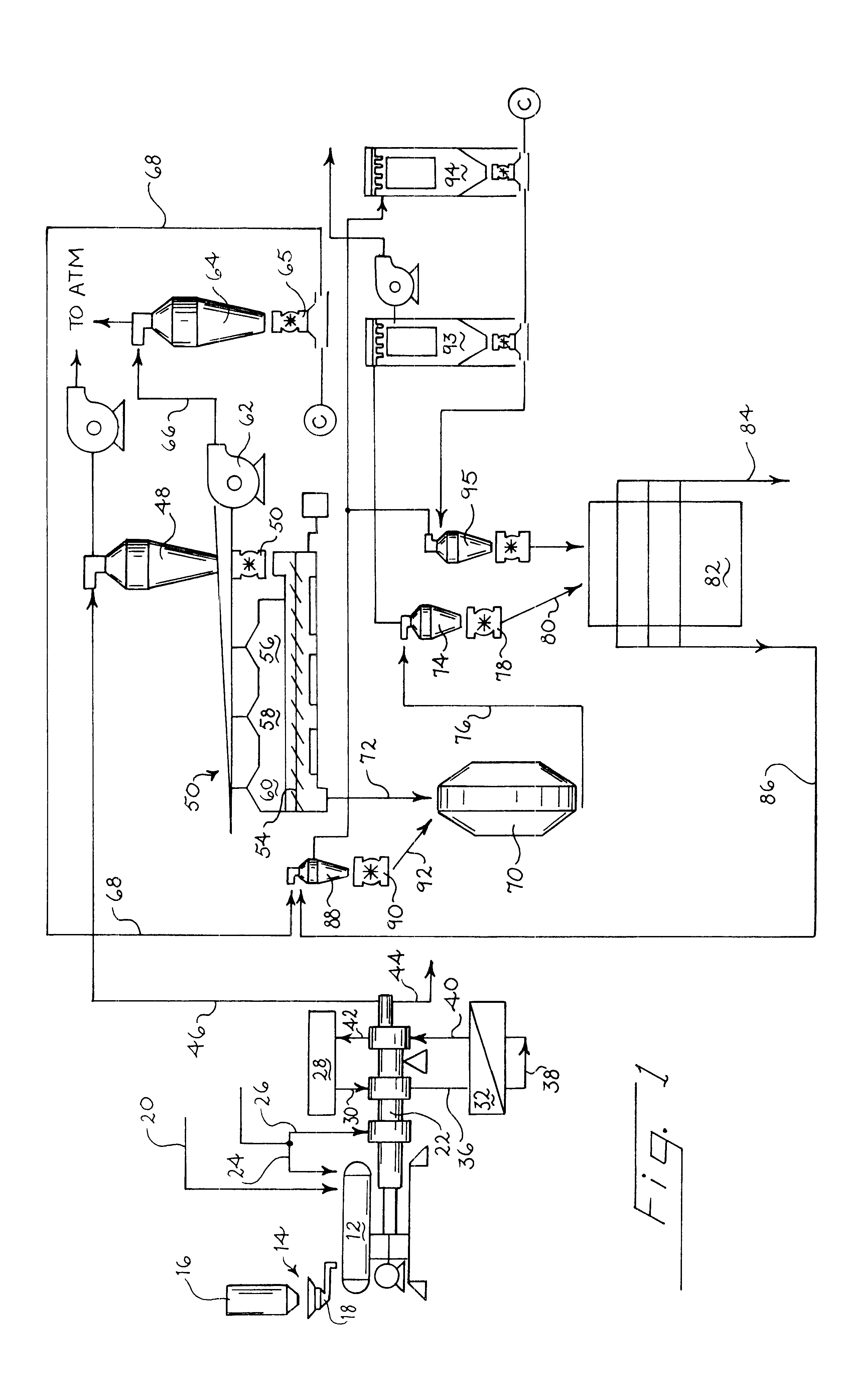Method for processing corn grit and product
a technology of corn grit and product, which is applied in the field of corn grit processing and product, can solve the problems of long time period required for water, difficult to control the amount of gelatinized starch that will be produced, and inefficient gelatinization of corn starch by heating whole kernels of corn
- Summary
- Abstract
- Description
- Claims
- Application Information
AI Technical Summary
Benefits of technology
Problems solved by technology
Method used
Image
Examples
Embodiment Construction
The starting material for the present continuous process is the horny endosperm portion of a corn kernel. The horny endosperm portion of each kernel of corn, also known as corn grit, is separated from the remainder of the corn kernel. The corn grit is then hydrated in a basic aqueous medium in a conditioner so as to raise the moisture level in the corn grit to a desired, but relatively low, level to form a hydrated corn grit. The hydrated corn grit is then cooked in an extruder at a temperature sufficiently high so as to rupture or partially rupture some of the hydrated corn meal particles which will contribute gelatinized starch to the produced corn collets, or to the corn flour produced by comminution of the corn collets. The corn grit may be ground before it is hydrated to form a corn meal of various particle sizes. Ground corn grit allows for even greater control over the amount of gelatinized starch produced.
The present continuous method allows efficient and effective control o...
PUM
 Login to View More
Login to View More Abstract
Description
Claims
Application Information
 Login to View More
Login to View More - R&D
- Intellectual Property
- Life Sciences
- Materials
- Tech Scout
- Unparalleled Data Quality
- Higher Quality Content
- 60% Fewer Hallucinations
Browse by: Latest US Patents, China's latest patents, Technical Efficacy Thesaurus, Application Domain, Technology Topic, Popular Technical Reports.
© 2025 PatSnap. All rights reserved.Legal|Privacy policy|Modern Slavery Act Transparency Statement|Sitemap|About US| Contact US: help@patsnap.com


